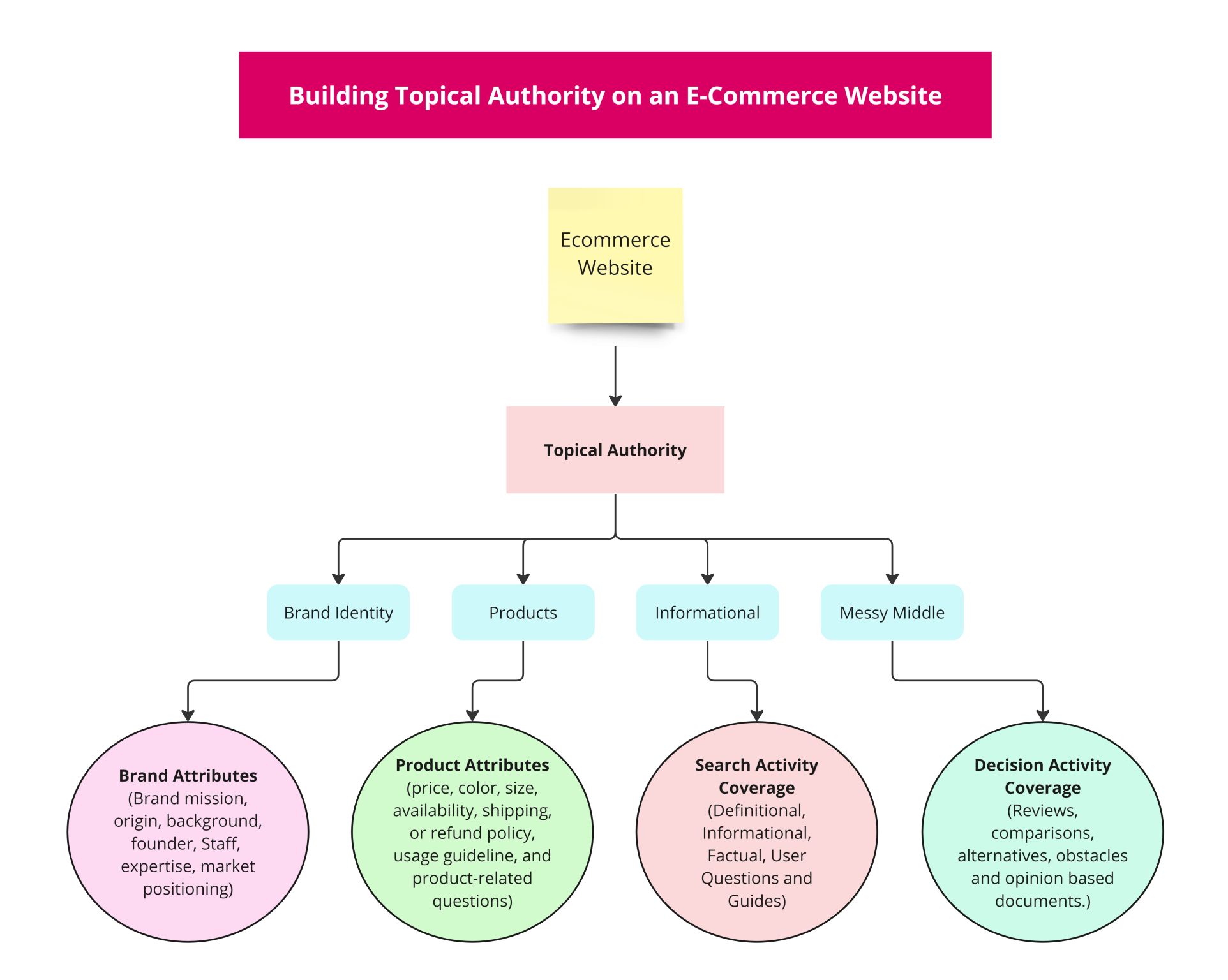🛍️ Difference Between Building Topical Authority for an Ecommerce Website vs. Other Websites

Why?
👉 The difference lies in website information architecture and multi-dimensional source context.
🧩 The information architecture contains:
- Brand identity
- Products with their categories
- Supporting informational content
🔄 The ongoing alterations of product lines may result in multi-dimensional source context.
But the first principles will remain the same.
📌 First Principle: Holistic Coverage of Products
✅ Covering all the possible and relevant search activities.
📂 How Content Coverage Can Be Bucketed:
1️⃣ Brand Identity 💼
It includes covering all the attributes of a brand on a website, which includes:
- Brand mission
- Origin
- Background
- Founder
- Staff
- Expertise
- Market positioning, etc.
2️⃣ Product Pages 📄
There will be holistic coverage of all product attributes for better user satisfaction.
📦 All the relevant entities of products will be processed, including:
- Brand
- Material
- Inventor
- Alternatives, etc.
📐 The dimensions of the product, brands, related entities, and their attributes will be processed by generating the best possible questions and ordering those questions to match with the document template.
🔍 That product information may include:
- Price
- Color
- Size
- Availability
- Shipping or refund policy
- Usage guideline
- Product-related questions
3️⃣ Messy Middle 🔄
💡 The way people make decisions is messy.
That’s why decision-making of purchasers is not linear.
📚 From a topical authority POV, there should be documents on the website that satisfy such user activities.
It includes:
- Reviews
- Comparisons
- Alternatives
- Obstacles
- Opinion-based documents
🧠 The correlated and sequential queries should be satisfied with the best possible document templates according to the source.
4️⃣ Informational 📘
This part of architecture will satisfy all the related and possible search activities of target users.
It will include:
- Definitions
- Questionnaires
- Guides
- Factual content
🎯 Strategy Based on Business Goals
Each bucket of information will be processed based on the BUSINESS GOALS.
✅ Commonly, it starts from building the brand identity.
This may include:
- Homepage branding
- Pages to fulfill attributes of all the related and possible brand attributes (e.g., About and Company pages)
➡️ Then, building commercial documents:
- All the relevant product lines with their document templates will be published according to the source architecture
➡️ And then, processing messy middle and informational documents to cover all the possible and related search activities.
📐 Framework by Koray Tugberk GUBUR
According to the framework, the coverage can be done in the following order:
Root document > Seed documents > Nodes
✅ Final Goal
Whatever the information architecture of an ecommerce site has —
The goal will be to cover:
- All possible search intents
- Correlated queries
- Sequential queries
- Entity-seeking queries
👉 With the best possible contextual vector.
